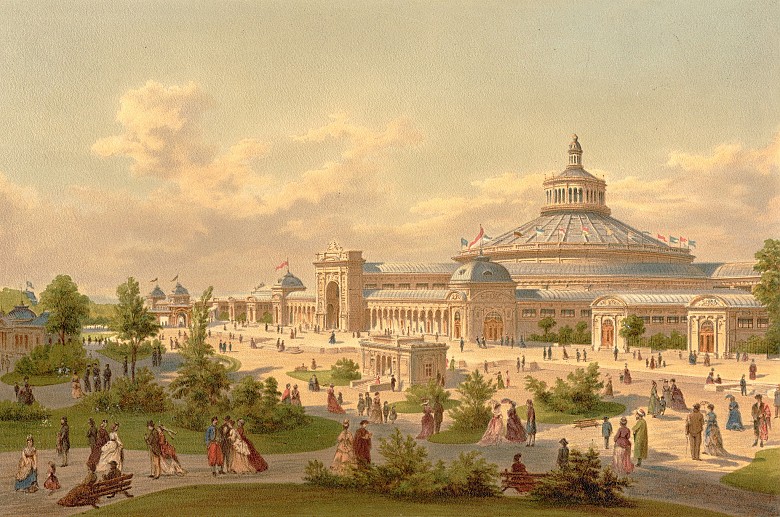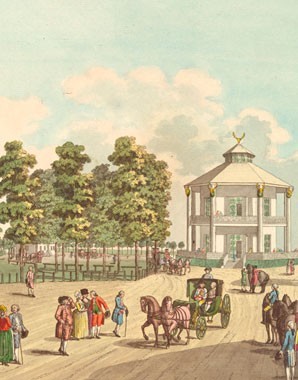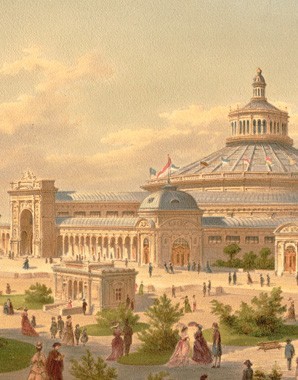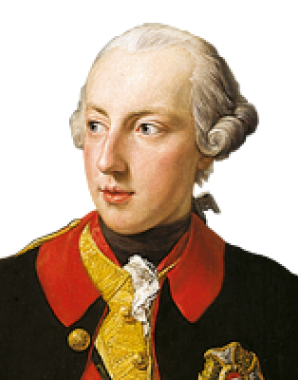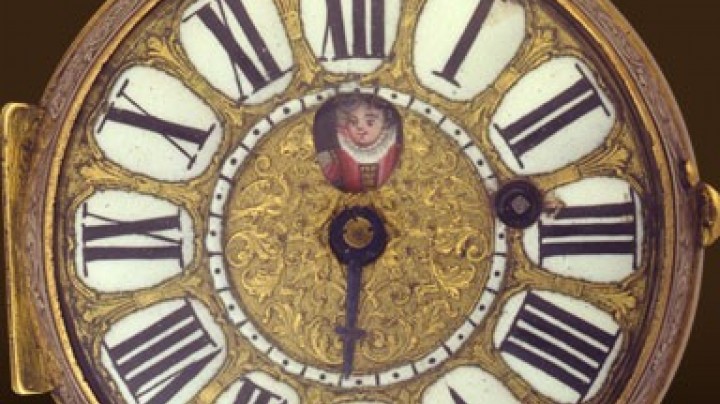Roll up, roll up! Entertainments in the Prater
Balloon ascents and ‘hair people’, coffee houses and the fat lady known as ‘Prater-Mitzi’, a vivarium and the Kobelkoff the Human Torso – exclusive attractions offered by the Vienna Prater, then as now a popular place of entertainment for the capital’s citizens.
Quoted from Mattl-Wurm, Sylvia: Wien vom Barock bis zur Aufklärung, Vienna 1999 (Geschichte Wiens 4), 72.Between 1773 and 1799 Johann Georg Stuwer staged pyrotechnical displays on mythological themes or renderings of battle scenes (The Siege of Vienna, 1783) as well as current events, all of which were extremely popular and drew crowds of up to 25,000 to the Prater. On these days an admission fee was charged. Events of this kind represented the transition between courtly and middle-class festive culture. Friedrich Nicolai provides an account of one of these firework displays in the Prater in his Reise durch Deutschland und die Schweiz (Journey through Germany and Switzerland):
‘The earth trembles, the woods echo with deafening thunderclaps; cities, palaces, fortresses, gardens, temples, fountains etc., appear, all in many and changing hues of fire, lighting up the surrounding area.’
Since the issuing of a decree by Emperor Joseph II in 1775 the Prater, formerly an imperial hunting reserve, has been open to the public. In the eighteenth century it was already a popular destination with the middle classes for Sunday outings. Social hierarchies are discernible in the different ways in which the area was used: the main avenue with its three coffee houses was the elegant promenade where the rich and beautiful strolled, while the site of today’s amusement park was the stamping ground for all the rest. Entertainments offered by the latter included merry-go-rounds, swings, skittles, shooting galleries, punching dolls and Punch and Judy shows, elaborate and hugely popular firework displays, even an ascent in a balloon.
The attractions in the Wurstelprater were a mixture of the educational and the absurd: a waxworks, a vivarium (an aquarium) and a planetarium as well as freak shows with ‘hair people’ (cases of hypertrichosis) and the Russian-born ‘Human Torso’, Nikolai Kobelkoff. As technology developed, new attractions were presented such as a railway carousel or the first electrically-driven ghost train.
The Prater was the location for the first World Exhibition in Vienna, which was however not a great success. The Rotunda built specifically for it, at the time the largest domed building of its kind in existence, became very popular with the Viennese, but burned down in 1937.
In 1897 the famous giant Ferris wheel was erected as part of the golden jubilee celebrations for Emperor Franz Joseph. Sixty-seven metres high, it represented a marvel of technology. Under the National Socialists it was aryanized, and was later badly damaged by fire during the Second World War. Afterwards restored, it is still the major attraction at the Prater funfair.
Until the early twentieth century the Prater remained a place of novel entertainments: changing attractions such as ‘Venice in Vienna’ (1895) with reproductions of Venetian palaces and canals, or a copy of an Ashanti village (1896) entertained the public. Emperor Franz Joseph seems to have visited these attractions and – as always – to have enjoyed them. People also had the opportunity to experience the new medium of film in the early Viennese cinemas at the Prater.




